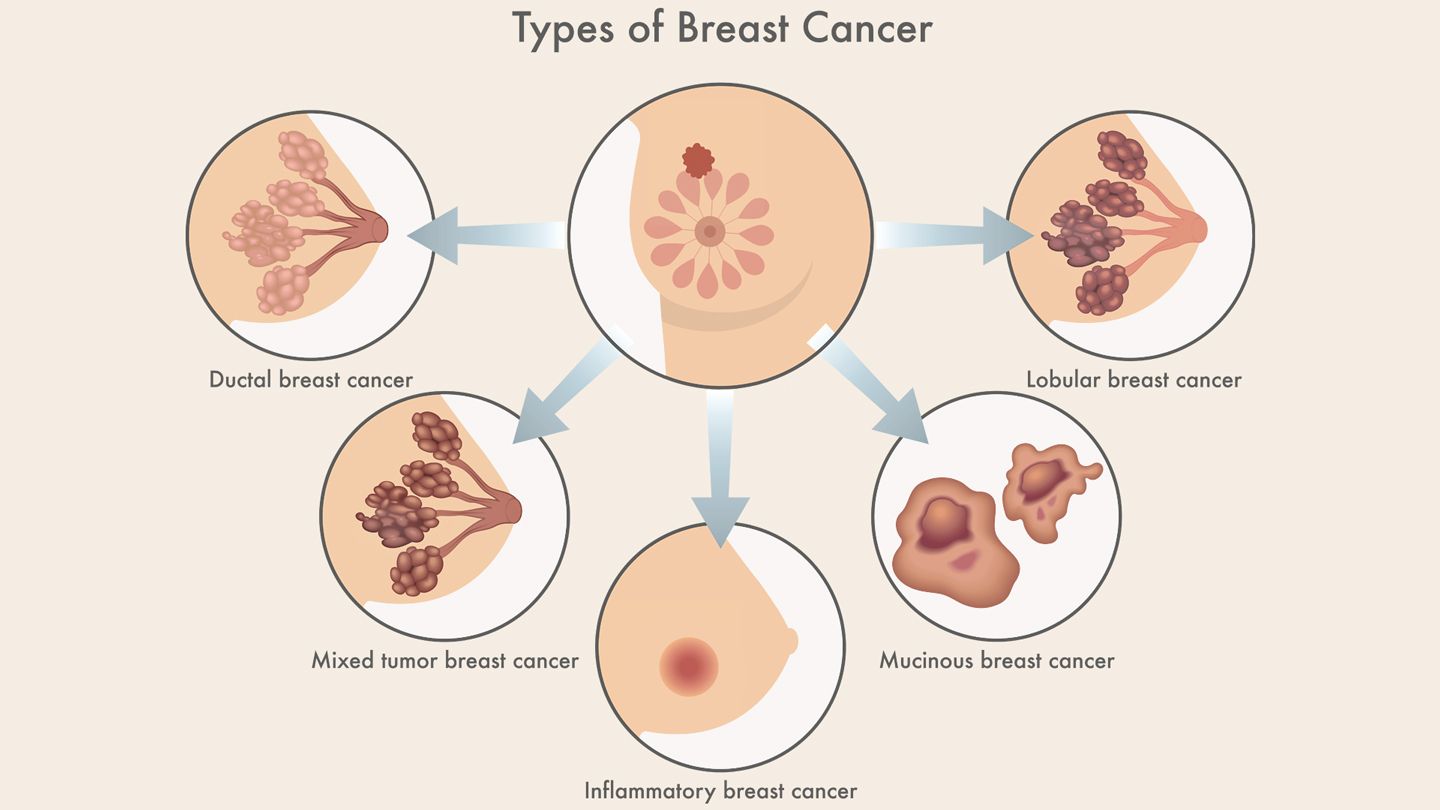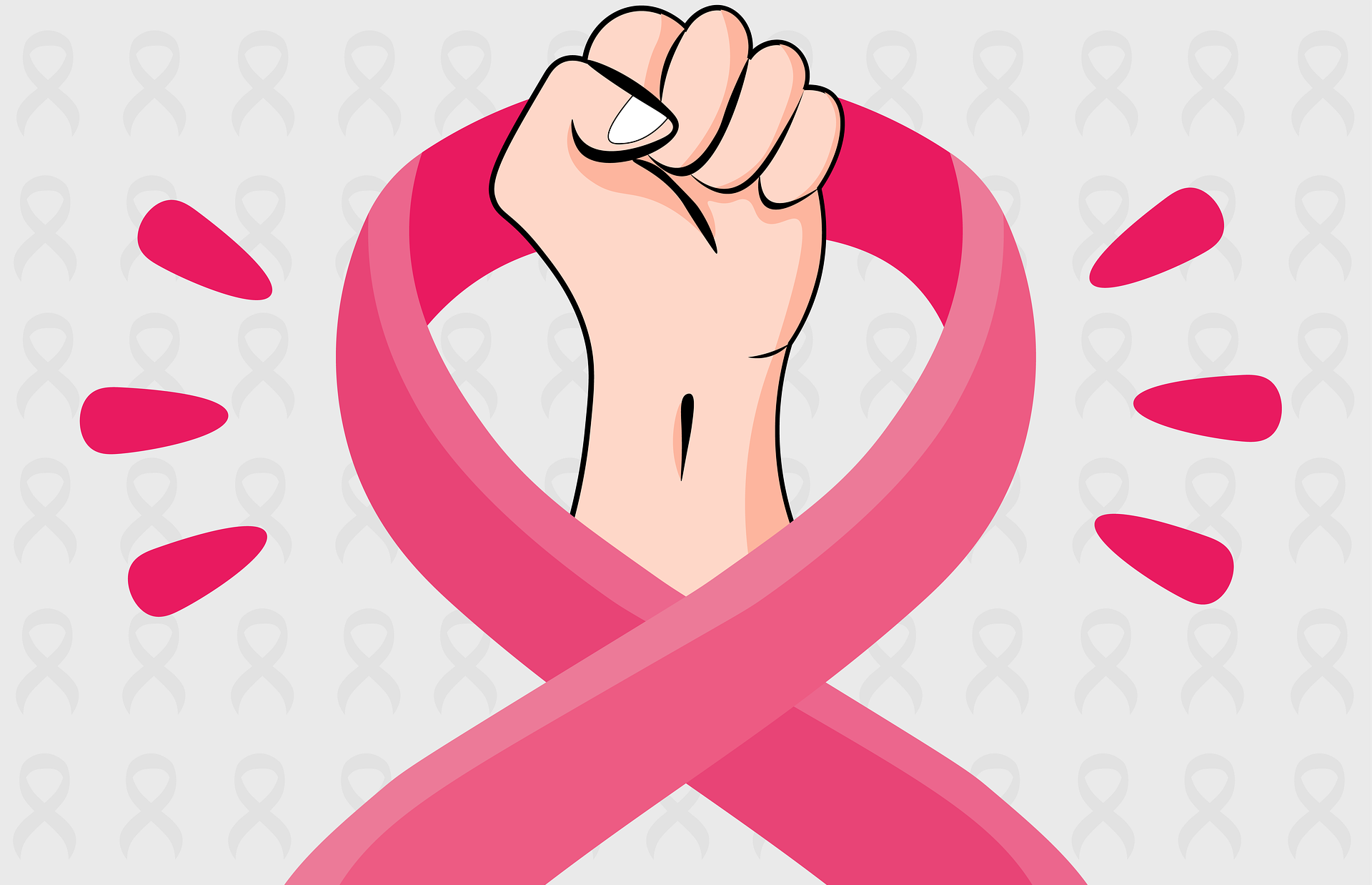By Charalampos Karouzos,
Breast cancer has been at the center of medical research for many decades, with billions of dollars invested in research and the development of approaches to better deal with this devastating form of cancer. Although scientific groups worldwide have devoted time and effort to battling the disease, not only have we not reached an effective therapeutic approach yet, but nowadays cases are rising among young women. In fact, it is the first and most frequently occurring cancer in women affecting 1/20 women worldwide and 1/8 of women in developed countries! Modern approaches to treatment, however, far exceed those of the past, but treating rising cases of breast cancer more effectively is not the solution to the primary problem, which is the presence of the disease. Our focus, and indeed the most effective approach, ought to be prevention.
Breast cancer as a disease must be first briefly explained. Breast cancer, as the name suggests, is cancer of the breast tissue, it primarily affects women, but men are also affected. Each year in the United States, about 264,000 cases of breast cancer are diagnosed in women and about 2,400 in men. The disease is caused by an uncontrollable proliferation of abnormal breast tissue that can also be transferred (metastasized) to other parts of the body. The proliferation of the cancer cells is not random though, and the risk of development varies among individuals. Women have a significantly higher risk than males, and African American women indeed are of higher risk among women. A higher risk of breast cancer development is directly linked to genes named risk factors, which control the abnormal cancerous tissue development. These factors can be subdivided into two large groups, the genetic and the non-genetic factors.
Genetic factors are inherited from one’s parents and cannot be altered. These factors are composed of genes that either have their presence or absence or altered (mutated) form of presence, affecting normal pathophysiological mechanisms, and providing a higher risk of developing cancer. Currently, we cannot alter these characteristic genes found in our DNA, but novel advancements in biotechnology seem very promising for the future. Nonetheless, we must take the crucial step of identifying those existing genetic risk factors and assess their importance to establish an intraindividual genetic predisposition to cancer development. On the other hand, however, apart from the inherited risk factors, there are non-inheritable ones. Non-genetic risk factors, also known as environmental risk factors, are linked to different lifestyles of people and everyday life. It is a long list of factors that constitute a crucial role in cancer development, speculated to be associated with 90-95% of cancer cases, and these include different foods, exercise, alcohol consumption, radiation exposure, type of occupation, and many more.

Breast cancer is part of the hormone-sensitive tumors, meaning that is directly affected by an individual’s hormone production. Precisely, hormones produced during the reproducible period of the female life, from menarche to menopause, have a great impact on cancer development. The relative risk (RR) of breast cancer increases by 5% for each year younger a woman is at menarche. Since the mid-nineteenth century, the average menarcheal age has decreased from 17 to 12 years of age due to environmental factors, thus predisposing females to a higher relative risk. Additionally, the age of menopause has been steadily increasing in the last decades. The increased period of exposure to reproduction hormones by the female population has been speculated to act as a significant force driving cancer cell development.
Moreover, the great reduction in the number of children in each family in comparison to the 1950s, along with the increased gestational age, collectively affecting reproductive hormone levels, increase the RR of Breast Cancer. On top of these risk factors, the recommendation of the World Health Organization (WHO) calls for breastfeeding alone for the first 6 months of life, with continued breastfeeding and complementary foods up until 2 years of age or beyond. All these natural and very common in the past physiological processes of childbearing greatly affect reproduction hormone levels and thus promote the development of cancerous lesions in the breasts.
The importance of the study of risk factors lies in the fact that eliminating or minimizing our exposure to them forms the basis of prevention. Prevention of cancer, although not perfect, has reached a point in which we can estimate an individual’s (primary for women) breast cancer risk using validated risk assessment models. The accuracy of these models is likely to continue to improve over time, particularly with the inclusion of newer risk factors, such as polygenic risk and mammographic density. These methods utilize current genetic data, clinically obtained data, and specialized software, to calculate in a standardized manner an individual’s risk of developing breast cancer, thus they provide an unbiased means of estimation of the patient’s future cancer status.

Breast cancer prevention, however, is not a one-step process and is best subcategorized into primary and secondary prevention. Primary prevention consists of eliminating the causes leading to the disease occurrence and increasing or enhancing the immune system in the population. It does not involve direct medical action and the ultimate goal is to provide the population with knowledge-awareness regarding the disease risk factors. Following primary prevention, secondary prevention aims at terminating the process of disease development before its full symptoms have been diagnosed, which may impede or prevent the development of a malignant tumor. Screening is the main example of such an approach and is targeted at specified groups of the healthy population, characterized by a greater risk of disease development.
Furthermore, breast cancer prevention can be enhanced with self-examination, a practice that is highly conflicted nowadays. In the past and in developing countries, it is still regarded as a great means of detecting possible cancer cases early by the patient itself and confirmed by professionals afterward. However, recent data argue with the efficacy of self-examination, as the high number of false positive cases, around 85%, due to wrong self-diagnosis, do not provide a clear advantage for patients in countries where standardized programs of breast cancer prevention take place. In fact, the false positive cases constitute a great economic expense to healthcare systems due to the unnecessary examinations, along with the increased psychological stress experienced by patients in the fear of a possible positive result.
In addition to primary and secondary prevention, some further medical procedures performed to prevent breast cancer in individuals with a high RR are prophylactic surgeries and chemoprevention. Prophylactic surgeries mainly involve the movement of the breast and/or the salpinges, thus decreasing the amount of cancer-prone tissue available. Females advancing to the surgery, mainly due to a high-risk medical history or for prophylaxis usually after childbirth, have a 90-95% decrease in cancer development. It must be stated that although the efficacy of the procedure is high, irreversible surgery can have a significant psychological impact on the individual. Chemoprevention, or more appropriately named risk-reducing medication, on the other hand, aims at reducing cancer incidence by administering pharmaceutical agents. These agents act on metabolic pathways that are linked to cancer tissue formation with significantly lower efficacy than surgical options, and thus must not be the first choice of treatment. The topic of risk-reducing medication is of great scientific interest with extensive ongoing clinical research.

To obtain a holistic view of the effects of cancer on health, however, the economic aspect of the disease must be presented. Currently, in the UK, breast cancer is costing the NHS (National Health System) over £700 million a year and is predicted to rise, with each late-stage diagnosis costing significantly more than if cancer could be detected earlier. In the US in 2020, medical expenditures for breast cancer reached a staggering amount of $16.5 billion. Adding to that, individuals are struggling to afford treatment and are battling with financial stability and access to care. Funds like the Pink Fund aim at assisting patients financially, providing both medical care and helping manage household bills.
Concludingly, Breast Cancer, the first and most frequently occurring cancer among women compromising 25% of all newly diagnosed cases is a crucial global health concern, with the number of new cases on the rise. The role of research must be to improve available prevention methods and make them available worldwide, in a financially bearable manner. Our role as humans, however, must be to raise awareness about the importance of prevention. Wearing a simple pink ribbon, the international symbol of breast cancer awareness, can drastically change the lives of our loving ones.
References
-
Agnieszka Kolak, Marzena Kamińska, Katarzyna Sygit, Agnieszka Budny, Dariusz Surdyka, Bożena Kukiełka-Budny, Franciszek Burdan, Primary and secondary prevention of breast cancer, in Annals of Agricultural and Environmental Medicine, Vol 24, No 4, 549–553.
- Britt, K.L., Cuzick, J. & Phillips, KA. Key steps for effective breast cancer prevention. Nat Rev Cancer 20, 417–436 (2020).




